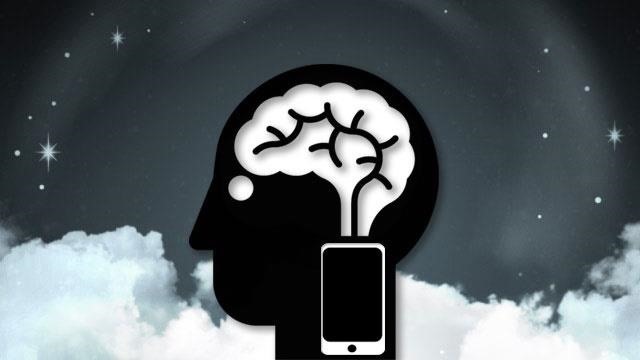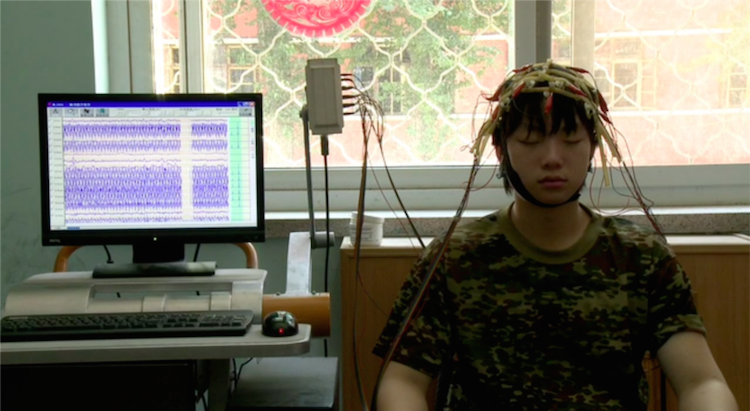Cyber psychology or how technology drives you crazy

What is the psyche? This is a rather complicated question, since this term refers to several sciences (psychology, medicine, and even philosophy). Usually we consider the term psyche, as a set of behavioral and emotional characteristics of a person. His conscious and unconscious. Also it is necessary to include in this list the mind itself, as a set of abilities to know the world and analyze the information received. To put it more roughly: everything we see, feel, everything we think about, analyze and remember and makes up our psyche. It is possible to determine the mental state of an individual by building a logical chain of events and factors that could influence its formation. However, it is often not enough just material methods, sometimes you have to use such intangible and illusory things as intuition, empathy, even curiosity. Each expert in the field of psychology (or medicine, or philosophy) can give his own definition of this term, draw his own conclusions, and they all may be right. This aspect of our existence is so extensive and non-linear.
Ever since mankind has known the Internet, many psychologists have been wary of it. This is not surprising. After all, the emergence of something new in the life of society, especially such a grandiose one, will a priori cause distrust. The World Wide Web began to actively expand, penetrating into an increasing number of structures and mechanisms for the functioning of mankind: science, education, military affairs, government, etc. Of course, no one can dispute the whole importance of this technology. But it is impossible not to see the influence, positive or negative, which it has on each of us. In this article, we will address the topic of the relationship between the human psyche and the Internet, its influence on it and aspects of the manifestation of certain deviations or diseases.
')
Each of us, one way or another, uses the Internet. If you are reading this text - you are already a user of the world wide web. Exactly how we use this technology, how much time we spend online and, accordingly, how much time we have left for real life - can influence the formation or changes of our mental or psychological state.

The most striking example is social networks. Their number is growing every year, as is the number of their users. We communicate, exchange files, find out the necessary information, make new acquaintances, and some even find their soul mate. And all this is literally on one web page. This is good? Yes. Communication, in any manifestation, is of great importance for a person, as for a social being. However, even here there is a sensible limit. There is such a thing as the "Dunbar number." In 1992, Mr. Dunbar conducted an experiment with the participation of primates, the purpose of which was to determine the relationship between the level of the neocortex and the number of individuals in the pack. Data collected from 38 genera of primates allowed us to make a mathematical formula that determines this relationship. Further, the indicators and methods of calculation were applied already in public, which made it possible to determine the number of Dunbar - the number of social connections that a person can maintain. On average, this is 150. And now let's look at how many people are “friends” with most users of social networks. Sometimes it varies from 400 to 500. For some, the number of "friends" can reach several thousand. If we take the above-mentioned Dunbar's theory as a basis, a person cannot support such a number of social connections. That is, the majority of these "friends" are actually a kind of phantoms, with which a person practically does not support or does not contact at all. Every person who is important in our life or is somehow involved in it requires attention. We are interested in the lives of our relatives, friends and colleagues. This requires quite a lot of mental costs, since we are spreading ourselves between these people. And the more we are surrounded by people, the stronger is the separation of our psyche, the harder it is for us to keep it in a normal, stable state. If a person will pay attention to each of the 4 hundred every day, either it will not be enough to maintain a healthy social connection or his condition may worsen. As a result, a person begins to feel depressed, tired, even lonely. Yes, lonely.

Robin Dunbar
The number of friends in the social network can not be an indicator of the level of sociability or satisfaction in communication. Also a very bad consequence is the deterioration of social activity in the real world. It is much easier for a person to organize himself in the online world, since this requires much less effort. Does not want to communicate with the person - does not respond to his messages or adds to the black list. In reality, a break in relations always follows an extremely unpleasant conversation for both parties. In the social network you can be beautiful, successful and popular. It's so easy to write - not what it really is. Thus, a person runs away from the gray and sometimes very gloomy reality. And the more time he spends organizing his virtual life, the less social activity in the real world he will show. Such people are not able to cope with stressful and conflict situations, especially if they relate to communicating with “real” people. Yes, this is a voice in support of the idea that social networks harm the communication of real, living. The way it is. However, do not go to extremes. If a person uses this service moderately, it will only complement his world. He will gain the ability to polish his communication skills and simply keep in touch with those who are important, but, for example, far away.
In turn, there is a relationship between the Dunbar number and the Metcalf law. The latter states that the cost of the network is proportional to the square of the number of its users. Simply put, if the network is not large enough - its value is greater than the utility. When the size of the network reaches a certain level, its utility grows without restrictions. Thus, the law of Metcalf shows that the economy of a social network increases and becomes an independent mechanism as soon as a certain number of users are reached. She just starts to work on its own. However, to achieve a critical mass of users, different projects need different times.
Thus, a large number of social connections benefit the social network itself, at the same time for the person himself, as the object of functioning among a given one, the excess of social activity of more than 150 leads to a deterioration of the mental state. In most cases, this kind of social connection is most likely not real, that is, they are inactive.
Metcalfe's Law

Cyber psychology - a section of psychology dealing with people associated with technology, identifies several major disorders that have arisen due to modern combination technologies, including the Internet.
Phantom call syndrome (or vibration)
This deviation manifests itself as a feeling that a person is called or his mobile device vibrates, when in fact it is not. The human ear is able to perceive sound in the range of 16 Hz - 20 kHz. He can take a shower, watch TV or vacuum clean - among all this “noise” the call of a mobile can be easily lost. This happens all the time. Accordingly, the fear of missing an important call is not a deviation. Phantom vibration is a paranoid obsession. It may occur after a long use of the mobile device in this mode.

The exact cause of these deviations is not yet known, but most of the researchers of this issue agree that these are consequences of prolonged use of mobile devices. This is not the usual use, because we all have a lot of social and business ties that we support, including through a mobile phone. It is a question of pathological dependence on this device. When a person experiences a phantom bell / vibration, the cortex of his brain incorrectly interprets certain sensory signals, such as muscle contraction, feeling of clothes on the body, playing music, etc., treating them as a phone call or a vibration. Most of the experiments and social polls showed that the number of people feeling the manifestations of the above pathology varies from 27.4% to 89%. The gap is associated with certain factors that affect the study, age, gender, social status of the subject. Almost all respondents experience phantom calls / vibrations once every 2 weeks. Carrying a phone in the same place for 1 month to 1 year causes a manifestation of this pathology in a person. How strongly this pathology affects the general state of the psyche is not yet possible to assess. Most people don't pay attention to it at all. However, it is already impossible to deny the existence of this deviation. In order to reduce the manifestation or even get rid of phantom calls / vibrations, you can simply periodically change the position of the phone and its mode of operation.
Nomophobia
Nomophobia - fear or phobia of a person to remain without the ability to use your mobile phone.
In a relatively short time of its existence, mobile phones have already become not only a popular, but a necessary device. Maintain communication with family and solve work issues, surf the Internet, make payments and much more, allows you to make a small pocket assistant. Having the ability to use a mobile phone is extremely important for each of us, but sometimes it can turn into a mental disorder. In the very real addiction, and later in the phobia.

This term - nomophobia - began to be used in 2010 after conducting research on the effect of a mobile phone on a person’s mental state. 2100 people were interviewed, 53% of whom are worried if they cannot use their phone (reasons: the battery is low, there is no mobile network, the phone is lost, there is a shortage of funds in the account). The gender distribution is as follows - 58% of men and 47% of women experience this phobia. About 9% of respondents feel real stress. The level of this state can be compared with a trip to the dentist or a wedding day. A clear indicator of whether a person is a nomophobe is the number of “phone checks” (his presence, bill, battery, etc.). Those experiencing this disorder, this number comes to 35 times a day.
We have previously considered the impact of social networks on the human psyche. It also appears in the context of this phobia. Since the capabilities of modern mobile devices allow their owner to use the Internet almost unhindered, social networks are also here. According to research, nomophobes are mostly teenagers and young people. Most of which may experience not only stress, but also a state of depression, if their phone is not available for use.
Nomophobia can manifest itself in different ways. For example, 34% of respondents from the United States use the phone during intimacy. And every fifth respondent is ready to walk barefoot for a week rather than also live without his mobile phone. Approximately 50% never turn off their gadgets. Someone may use the telephone too often and / or “impulsively”. Someone carry a charger wherever you go. Someone has more than one or two devices, mostly for accessing the Internet. Someone is experiencing severe stress and anxiety, losing the ability to use mobile. There are quite a few manifestations, but this does not mean that they are talking about a person’s predisposition to this phobia. This is indicated by the frequency of manifestation of such symptoms.

According to psychologists, for the majority of nomophobes their phobia serves as a defensive reaction from society as such or from communication with certain individuals. A more serious form of the syndrome is called “hyperlink”. In this case, the person is not just afraid to part with his mobile phone, he simply depends on him. This is manifested in the reduction of social activity in the real world and its redirection to the virtual world, in order to avoid stress or discomfort. The symptoms of such people include anxiety, respiratory changes, tremors, sweating, emotional agitation, disorientation, and tachycardia. Symptoms of an emotional nature are: depression, panic attacks, fear, dependence, rejection of awareness of this dependence, low self-esteem, loneliness.

At the moment, centralized treatment of this disease is not yet available. However, methods of cognitive-behavioral psychotherapy using certain drugs are used.
Cognitive-behavioral therapy is aimed at restoring a person’s independence, that is, the ability to live without constant use of a mobile device. However, this method is extremely difficult, since it requires strong intervention from the side (doctor or relatives) necessary to control the treatment process. In most cases, the most effective means remain various drugs, including psychotropic drugs.
All of the above more than colorfully describes the seriousness of this disease. The inability of a person to distinguish between the need for a telephone and its dependence on it may lead to its removal from society. As psychiatrists say, a disease that can be cured solely by medication is not a joke.
Internet addiction (IAD)
Here we come to the acquaintance with the most common deviation of the mental state of a person with access to the Internet. Mobile phone dependency, phantom vibration and other abnormalities are derived from Internet addiction.

For the first time this term and its description appeared back in 1995. Ivan Goldberg, a psychiatrist from New York, created a description of various disorders arising from substance abuse. Subsequently, Mr. Goldberg (for crediting the Internet in dependence) used the model of pathological propensity to gamble (ludomania). Goldberg was not going to draw serious conclusions, his words were more like a joking utterance. However, many researchers of the human psyche and its relationship with the Internet have seen in the work of Goldberg a grain of truth. But the lack of scientific base and examples for analysis did not allow the rapid development of the study of this issue.
Internet addiction can be divided into several subtypes depending on the type of activity that a person performs on the network: social networks, blogs, e-mail, online games, posting photos, and shopping. Each of these actions, separately or in some combination, is performed by any user of the World Wide Web, but when such activity exceeds the norm, suspicion arises in dependence.
Internet addiction can be described as a department of "technological dependence". This term refers to the dependence of the individual and all of humanity on technology. It began to be used during the time of the appearance of the radio, and then again gained its former popularity when television appeared. Now the Internet is much more popular than radio and TV combined. The incidence of Internet dependency varies in different countries and depends on the standard of living.

During the treatment of Internet addiction (China, camp for patients with Internet addiction)
Experts in the field of medicine and psychiatry are still arguing about the reality of Internet addiction. Some believe that it does not exist. Others, on the contrary, argue their opinion with the collected data. Addiction, as a medical term, means an obsessive need to consume certain substances. It is expressed with certain physical and mental disabilities. Thus, dependence on the Internet can be attributed to non-chemical.
For a more convenient analysis of the state of the human psyche with IAD, there are 6 main categories of this disorder:
- Information overload (obsessive desire to browse many webpages, in other words, constant Internet surfing)
- Redundant virtual communication (chat rooms, social networks, forums, etc.)
- Internet gambling (obsession with multiplayer online games)
- Financial Internet addiction (online gambling, online shopping, auctions)
- Kinomaniya (watching movies online)
- Cybersexual addiction (attraction to watching pornographic films and entering into cyber-intimate connections)
Statistical data collected by different organizations differ from each other, but it can be said that approximately 10% of the population suffers from IAD. Internet addiction is becoming more and more publicized in the world. Many countries have officially called this phenomenon a mental illness.Camps are being organized to treat people with IAD (China has become a pioneer in this area). So far this process is rather slow, which is most likely due to a small percentage of dependent people and the reluctance of some specialists with conservative views to perceive IAD as something real.
Cyber chondria or cybernetic hypochondria
Hypochondria is a pathological condition of an individual, which manifests itself as a constant fear of getting sick, complaints about his physical condition, perception of normal sensations as abnormal and unpleasant. In this case, a person is often sure that he is 100% aware of what kind of disease he has, without perceiving the opinion of physicians.

Cyber chondria, in turn, is a branch of hypochondria. And has the same manifestations with the addition of self-diagnosis through surfing the Internet. Opinions of experts in the issue of cyber-chondria differ. Some people believe that information collected on the Internet can lead to a negative reaction (fear, stress, etc.) even in a person who has never suffered from hypochondria. It is also believed that this type of disorder is simply the modern embodiment of hypochondria, since the global network is not the source of the disease, but only its means of expression, a kind of one of the symptoms.

If we consider cyber chondria as an independent deviation, we can distinguish the following symptoms:
- Excessive use of the Internet to search for information about diseases, and a strong deterioration in health after
- , ,
- online
- online
- ( ),
- (, , ..)
- ,
In the UK, a study was conducted, the results of which were published back in 2007. According to their data, 65% of Internet users prefer a worldwide network to real doctors for diagnosis and even treatment. 46% of those surveyed were generally completely confident in their own diagnosis, but only 15% were really right.
Cyberhondria is a very dangerous deviation, as it can even lead to lethal consequences. Improper diagnosis, selection of drugs and treatment methods can only harm a person who is sure that the Internet can help him much more than real doctors.
Google effect
The great, near-knowing Google search engine giant has been helping Internet users find answers to their queries for many years. Just a couple of clicks and the person gets the information he needs. It seems nothing terrible, but it is not.

The effect of Google is the tendency to forget information that can be easily found using search engines such as Google. The person, realizing that the answer to his question is just a couple of clicks, will use the search engine again and again, not trying to remember the answer to his question from the first time. At the same time, the ability to learn from such people remains at a normal level.
This effect was recognized by an experiment conducted among students at Columbia and Harvard Universities. The experiment was divided into 4 phases.
Phase number 1
Participants had to answer with one word (define the term) to a few simple questions. Then they used a program where they had to quickly answer what color (blue or red) was this word. Some of these words were related to the search engines Google and Yahoo. The response to words related to search engines was significantly higher. This gave reason to assume that the subjects thought about the search engines during the solution of the problem.
Phase number 2
Subjects of the experiment were given certain expressions related to the questions. Then they were informed which nicknames could be used later and which ones could not. Those expressions that can be seen again later are remembered much worse.
Phase 3
Now, subjects should be able to enter data on the questions asked to them in a special program. As a result, a person could see 3 options for software alerts:
- “Your entry has been saved”
- “Your record has been saved in the folder FACTS, DATA, INFO, NAMES, ITEMS or POINTS”
- “Your entry has been deleted.”
People were assured that they would have the opportunity to use the stored information in the future (the first 2 options). As a result, information from the third category (“Your entry was deleted”) was remembered much better.
Phase 4
In this phase, the subjects believed that the information they needed was stored in certain folders, the names of which they memorized better than the information itself.
According to the researchers, this does not mean that modern people who know how to use search services are empty-headed and unable to remember anything. This is just an indication that a person always adjusts to the situation, remembering the simplest ways to solve a problem or, in this case, to get answers to their questions.
All of the above abnormalities, syndromes and diseases are the result of our direct and close connection with modern technology. It is simply impossible to get rid of the source of all misfortunes, because no matter how much it harms the human psyche, this is an essential component of the functioning of the modern world. However, do not look at these problems through the fingers. History knows many examples of how mental illness was not perceived as something dangerous until people suffered.

No one is trying to make us technologists or paranoids, we only need to remember such simple truth “Everything is good, in moderation”.
Source: https://habr.com/ru/post/262767/
All Articles